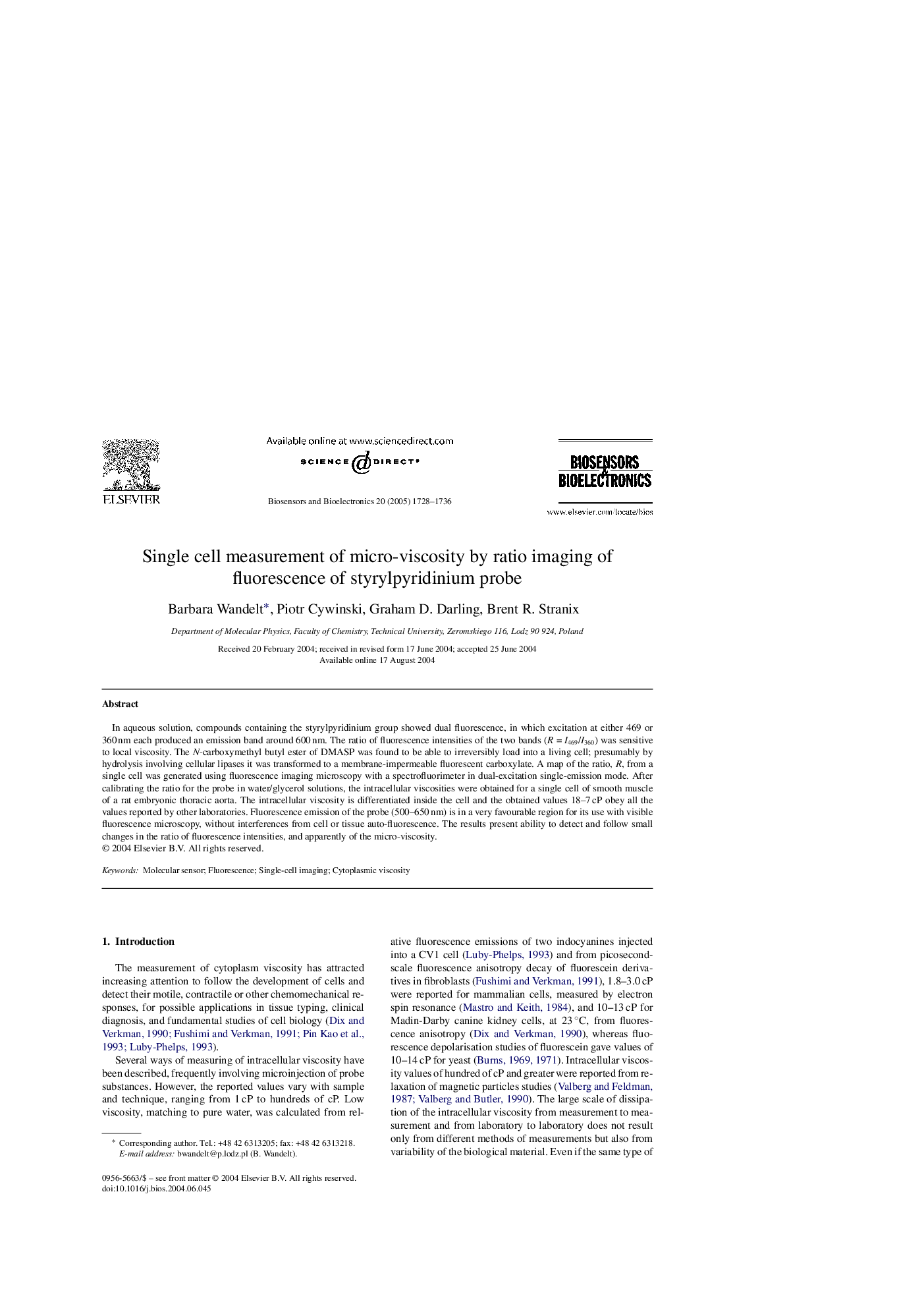| Article ID | Journal | Published Year | Pages | File Type |
|---|---|---|---|---|
| 10429772 | Biosensors and Bioelectronics | 2005 | 9 Pages |
Abstract
In aqueous solution, compounds containing the styrylpyridinium group showed dual fluorescence, in which excitation at either 469 or 360Â nm each produced an emission band around 600Â nm. The ratio of fluorescence intensities of the two bands (R = I469/I360) was sensitive to local viscosity. The N-carboxymethyl butyl ester of DMASP was found to be able to irreversibly load into a living cell; presumably by hydrolysis involving cellular lipases it was transformed to a membrane-impermeable fluorescent carboxylate. A map of the ratio, R, from a single cell was generated using fluorescence imaging microscopy with a spectrofluorimeter in dual-excitation single-emission mode. After calibrating the ratio for the probe in water/glycerol solutions, the intracellular viscosities were obtained for a single cell of smooth muscle of a rat embryonic thoracic aorta. The intracellular viscosity is differentiated inside the cell and the obtained values 18-7Â cP obey all the values reported by other laboratories. Fluorescence emission of the probe (500-650Â nm) is in a very favourable region for its use with visible fluorescence microscopy, without interferences from cell or tissue auto-fluorescence. The results present ability to detect and follow small changes in the ratio of fluorescence intensities, and apparently of the micro-viscosity.
Related Topics
Physical Sciences and Engineering
Chemistry
Analytical Chemistry
Authors
Barbara Wandelt, Piotr Cywinski, Graham D. Darling, Brent R. Stranix,
